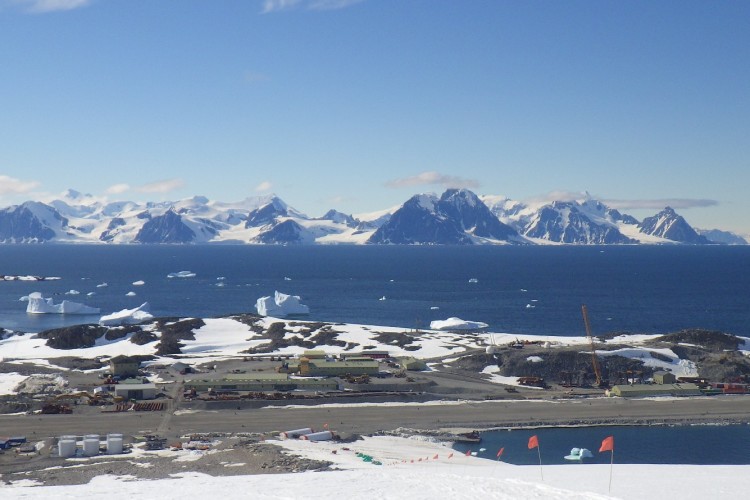The project for the British Antarctic Survey (BAS) is being delivered by the Antarctic Infrastructure Modernisation Partnership, which includes construction partner BAM and its design consultants Sweco and Hugh Broughton Architects, with Ramboll acting as technical adviser to BAS on a team that also includes Turner & Townsend and architect Norr.
The new operations building, named The Discovery Building to commemorate the discovery of Antarctica 200 years ago, is being delivered as part of the Antarctic Infrastructure Modernisation (AIM) programme to update and restore infrastructure at Rothera, BAS’s largest facility.
Today marks the 200th anniversary of the first sighting of Antarctica by the British naval officer Edward Bransfield.
The Discovery Building is designed to consolidate and rationalise the Rothera estate, replacing a series of buildings that are outdated or costly to maintain.
The two-storey 4,500m2 building will accommodate preparation areas for field expeditions, a central store, medical facility, offices, recreational spaces, workshops and areas for plant. The renovation programme began in 2018 with the construction of a new enlarged wharf and improvements to station infrastructure. The Discovery Building will be under construction until 2023. All materials required to build the facility will be delivered by ship in containers and erected to programme that has been developed to ensure that the building can meet precise seasonal milestones.

Minimising the environmental impact of Rothera Research Station is a key part of BAS’s vision for the site. The project is using a bespoke BREEAM accreditation and assessment system, which has been developed by Ramboll in collaboration with the Building Research Establishment (BRE) to suit the Antarctic setting.
The energy-efficient, aerodynamic design is oriented into the prevailing wind and uses a deflector to channel air at higher speeds down the leeward face, minimising snow accumulation around the entire perimeter of the building. It is the first time a snow and wind deflector has been used at this scale in Antarctica. Ramboll has also considered the orientation of the building, using snow modelling techniques to assess its optimum position in order to mitigate the challenging Antarctic conditions.
A control tower protrudes from the mono-pitch roof and provides 360° panoramic views of the runway, wharf and station buildings. The pale blue colour of the building is inspired by the tones of the Antarctic sky; the pale colour minimises the impacts of degradation from high levels of UV, which is a feature of Antarctica. The final building envelope is formed with composite insulated metal panels and triple glazing to create an airtight and thermally-efficient enclosure, which will minimise energy use.
An early liveability study helped inform the interior spaces based on feedback from field staff. Open-plan workspaces and break-out areas support the well-being of staff and foster collaboration. Vibrant colours have been incorporated to bring identity to spaces and help offset the effects of seasonal affective disorder (SAD) during the long, dark Antarctic winters. Roof lights introduce natural light into the centre of the building. Transparent glazed screens provide views between spaces to help with passive monitoring to maximise health and safety of the small crew who maintain the station in winter.
Graham Hopper, project director of the BAM construction partnership, said: “It is a privilege for all those involved, and testament to the hard work of all the partnership team, to be breaking ground for this state-of-the-art building, on this significant anniversary for the continent. The team takes great pride in being able to support BAS in continuing its pioneering science research so we can better understand our planet.”
Rothera Research Station is situated on a rocky promontory at the southern extremity of Adelaide Island. It has been occupied since 1975 and operates year-round. A wide range of scientific research – including biosciences, geosciences, glaciology and meteorology – is carried out in and around the station. Rothera is also a major logistics centre, supporting all BAS operations in Antarctica.
Got a story? Email news@theconstructionindex.co.uk
.png)



